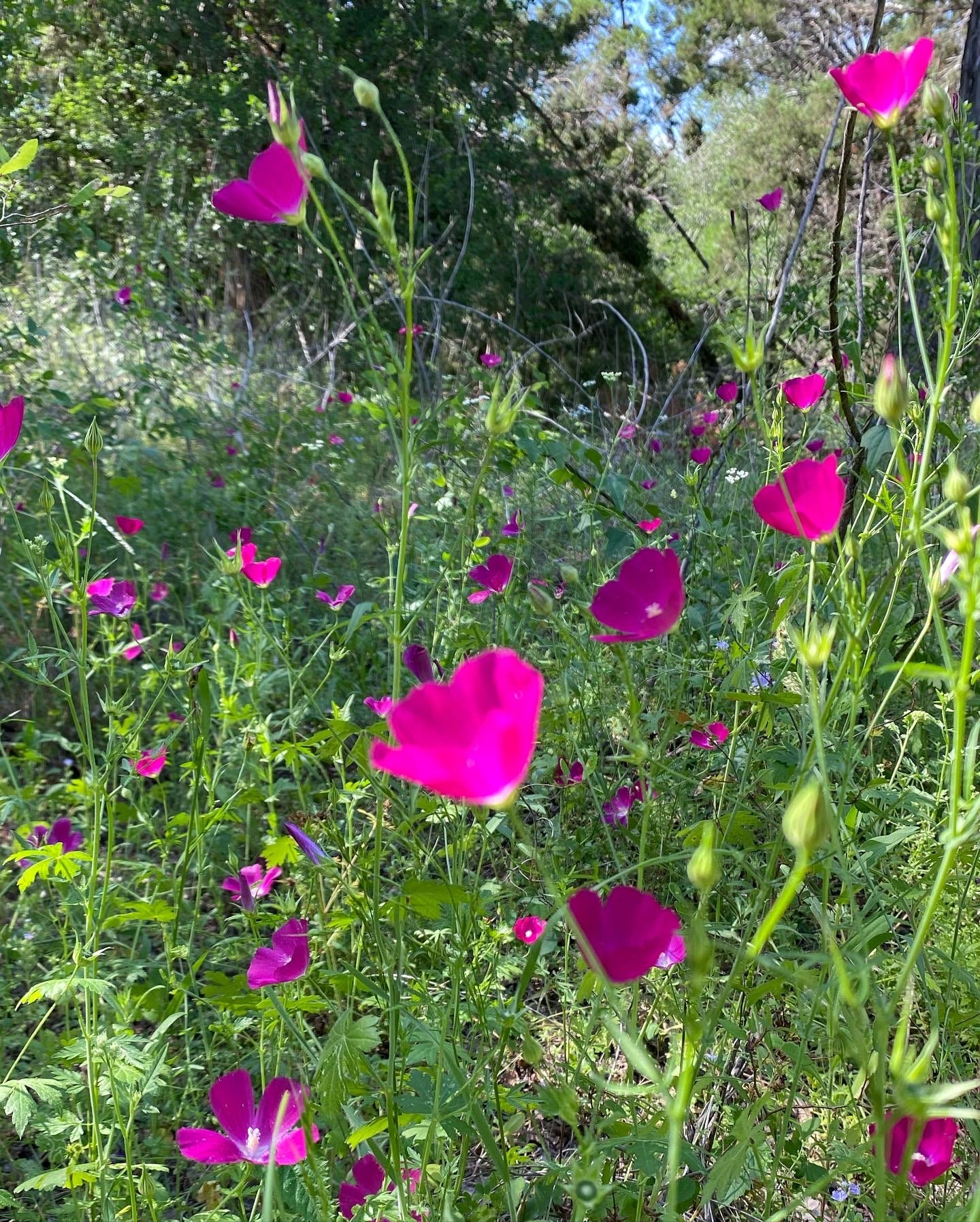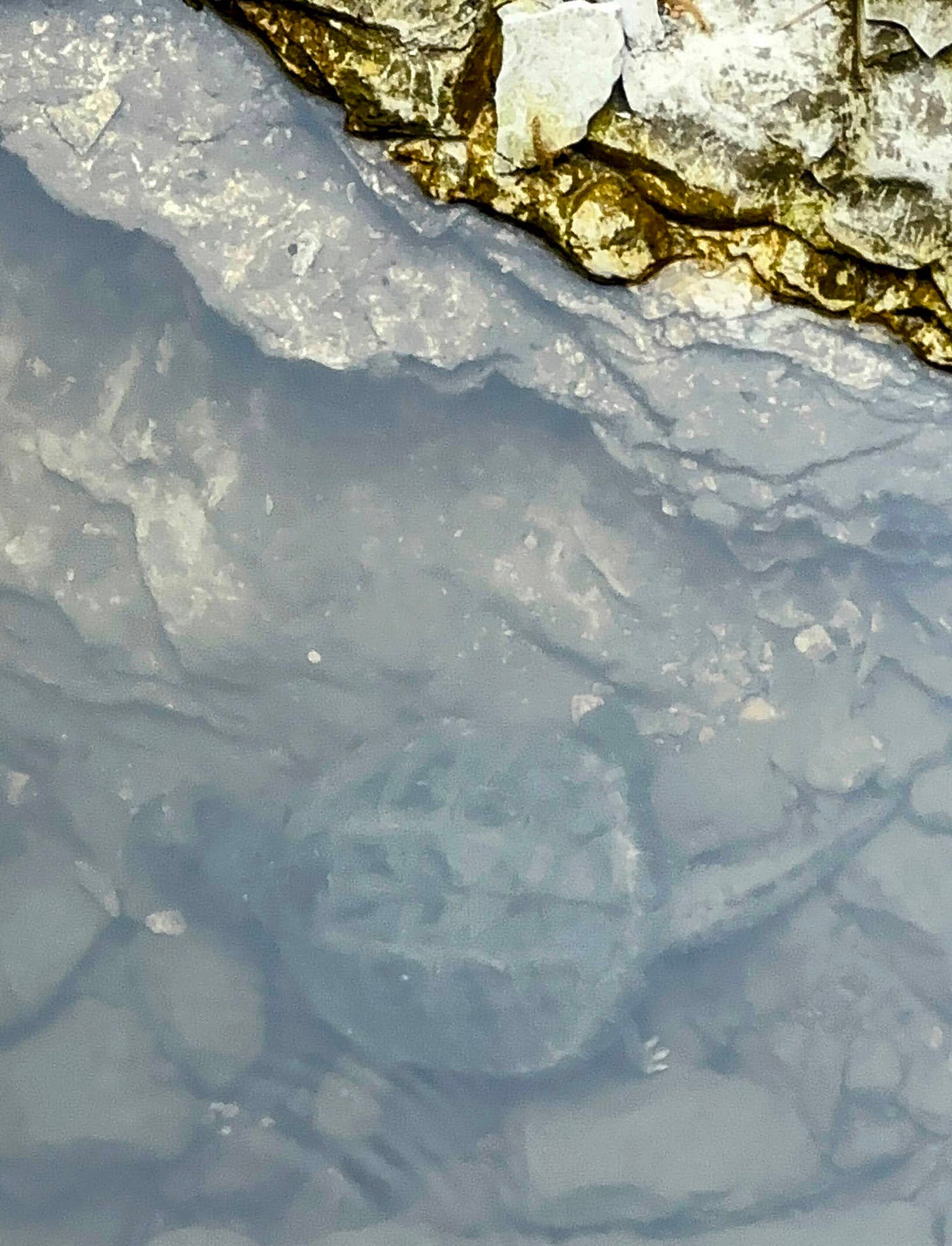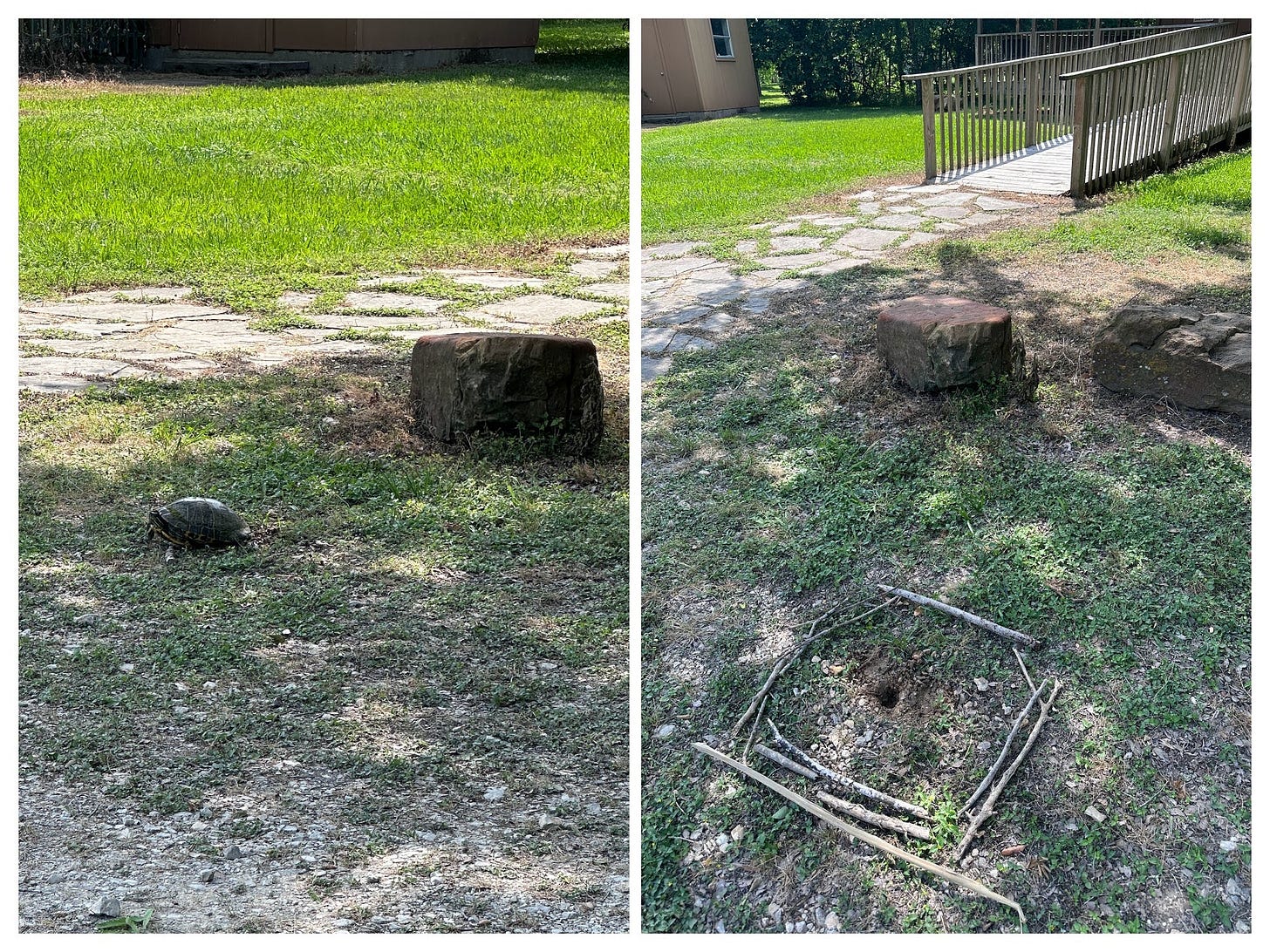Turtle therapy and rage walks
Bilateral stimulation is even more effective when a reptile says hi.
Like many Texans, I’m dreading the fast approach of summer, our special version of seasonal affective disorder. I’ve got just a few weeks (maybe even days) until I have to give up daily “rage walks” across my South Austin neighborhood, and find some other way to reset my soul without risking heat stroke.
During a rage walk1, I put my AirPods in and take a walk while basically ranting into my voice memo app, recording myself as I work through some of the tough questions in my life—an audio journal of sorts to refer to later. These walks have kept me sane as I grapple with two severely mentally ill family members, one who may die from addiction, and one who may die from mania-fueled behaviors.
Turns out this is basically a type of self-guided trauma therapy. By engaging in “bilateral stimulation” (using both sides of my body in a rhythmic way) while revisiting painful memories, I am learning to reprocess my emotions/memories while my body is a in calm, relaxed state.
Rage walking is best done outside, at least for me. Even living just two miles from downtown Austin, nature will often pop up and remind me of the much older and mysterious world that exists beyond my problems, inducing awe—another good thing for mental health. I’ll be ranting about something like the endless struggle of enabling vs. helping, and suddenly, a Texas spiny lizard will scamper across the path, its annoyed grimace making me laugh.
On a walk last week, I felt like Snow White (or maybe more accurately, Snow White’s older sister who clearly has “seen some shit.”) As I blabbed to myself about anticipatory grief and feeling powerless over my loved one’s relapse, the cardinals and the freakishly loud Carolina wrens wouldn’t stop singing, audible on the voice memo I was trying to record.
High above these fence line birds, a flock of black-belling whistling ducks flew by, squeaking their sweet high-pitched songs (they don’t quack). Crossing the sidewalk, I was surrounded by dozens of shimmery blue barn swallows, swooping and eating bugs midair.
And there was the wildflowers, of course. The bluebonnets had faded, but the winecups were glowing, demanding I look at them:
By then, I had definitely calmed down, fully in awe of how much nature can be found on just one block. But it got even better when I crossed a bridge and looked down into West Bouldin Creek, an urban waterway that winds through a small industrial area, a mobile home park, and several homeless encampments before joining the Colorado River, aka Lady Bird Lake. I didn’t expect much from this often trash-lined creek, but I like to stop and peer down, just in case. You never know: In spite of its urbanity, its limestone river bottom means it tends to run clear and cool, keeping it clean enough to support life amid the litter.
And indeed, it was a good idea: I spotted a common snapping turtle! While red-eared sliders and Texas cooters are ridiculously common in the Colorado, I’ve never seen a turtle in Bouldin Creek, much less a snapper, a species that dates back 90 million years, paddling around in wetlands while giant dinosaurs flourished all around them.
Eventually, this turtle came up for air and moved on, and I resumed my rage walk. The experience stayed with me, as most of my turtle encounters do. They are remarkable animals, and had my life turned out differently — had I gotten to live a dream life as a science writer — I’d do nothing but write about them (as I got to last year for Texas Monthly).
Resilience is a turtle
Sy Montgomery, author of the book Of Time and Turtles: Mending the World, Shell by Shattered Shell, is a kindrid soul I hope to meet one day. As she explains, turtles of all types can recover from seemingly fatal injuries, as long as they’re given the time and space to heal.
Writing about her own growing awareness of the limits of the human lifespan, and her desire to appreciate life more in her older years, she muses:
Who better than turtles—ancient, unhurried, long-lived beings revered as icons of serenity and persistence—to show me the path to wisdom, and how to make my peace with time?
I think that’s what draws me to them, too: There’s no denying their ancient genetics, their fossil records, and most of all, their resilience. (OK, and their cuteness, too.) They are so vulnerable—crossing roads in search of territory, eating plastic vinegar bottles floating in the ocean—but we, as a horrible destructive alpha predator species, haven’t managed to obliterate them. (Yet.)
Rebirth, literally
This past weekend, I lucked out again: The turtles weren’t done with me yet. A few days later on Easter Sunday, while arriving at the empty Matagorda County Birding Nature Center with my husband/kiddo, I stumbled across a turtle laying her eggs in the parking lot. We left her alone, of course. Later, when we got back to the car, she was gone. To keep her eggs safe, we marked the nest off with sticks.
It was fitting that we had this sighting on Eostre, a day that predates Christianity, a day to celebrate spring and rebirth. When it comes to reminders about the remarkable ability to heal—and survive—one need not look further than the turtle.
I got the idea for rage walks via this podcast from
This newsletter is my labor of love for prickly people. If you enjoy my writing, please support my work and buy me a coffee. ☕️🤎🌵







Someone built a turtle pad for the pond in our neighborhood a few years ago, and every time I drive by I comment "it's a good day for turtles" or "it's too gray for turtles." They're just red-eared sliders common here, but I love the way they climb up to sun themselves by the dozens on clear days. Definitely a mood booster.
I love a rage-walk, though that expression is new for me. Love an audio journal too. It's a big part of how I got through those long covid lockdowns. I (quite literally) talked myself through it 💕